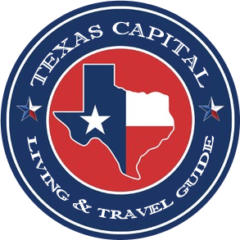Texas School Choice
Contents
School choice is a highly debated issue in Texas, as it is in many other states in the US. At its core, the debate is about whether parents should be able to choose where their children go to school and whether or not public funds should be used to support private schools.
On one side of the debate, advocates of school choice argue that parents should have the right to choose the best educational option for their children, regardless of whether it is a public or private school. They believe that competition among schools will lead to higher quality education and that public funds should be used to support parents’ educational choices.
On the other side of the debate, opponents of school choice argue that public funds should be used exclusively to support public schools, which must provide education to all students regardless of their background or abilities. They believe that diverting public funds to private schools will ultimately harm the public education system, taking resources away from public schools and resulting in more significant inequities in access to quality education.
In Texas, the debate over school choice has taken various forms, including proposals for voucher programs that would allow parents to use public funds to pay for private school tuition and efforts to expand charter schools and other forms of school choice within the public education system. The debate continues to be an essential issue in Texas and other states as policymakers and stakeholders seek to find the best ways to improve educational opportunities and outcomes for all students.
Currently, there are several options for school choice in Texas, including charter schools, magnet schools, private schools, and homeschooling.
- Charter schools are public schools operated independently of the traditional school district. They are typically created to provide a different educational experience than the traditional school system.
- Magnet schools offer specialized curricula and instruction, often focusing on a particular study area, such as the arts, sciences, or technology.
- Private schools are not part of the public school system and are usually funded by tuition fees.
- Homeschooling is when a student is educated at home, usually by a parent or guardian.
Each school choice option has advantages and disadvantages, and families must consider their individual needs and preferences when deciding. Ultimately, the best school choice for a student and their family is the one that meets their individual needs and provides the best educational experience.
Charter Schools in Texas
Texas Charter schools are an increasingly popular option for parents seeking an alternative to traditional public schools. These schools are publicly funded but operate independently of the local school district. They have more freedom to design their curriculum and teaching methods and often focus on a specific study area, such as the arts, sciences, or technology. They also tend to have smaller class sizes and more personalized instruction.

Charter schools in Texas have grown in popularity over the past few years, with more than 500 schools currently operating in the state. They are a great option for parents who want their children to have a more individualized learning experience. They often provide a higher quality of education than traditional public schools. In addition, they are often more affordable than private schools, making them a great choice for families on a budget.
Charter schools in Texas have their unique advantages and disadvantages, so parents need to do their research before making a decision. It’s also important to remember that these schools are still subject to the same standards and regulations as traditional public schools, so ensuring that the school meets the state’s educational requirements is important. Ultimately, charter schools in Texas can be a great option for parents looking for an alternative to traditional public schools.
Advantages
- Increased school choice: Charter schools offer an alternative to traditional public schools, providing families with more options regarding their child’s education.
- Flexibility: Charter schools have more flexibility than traditional public schools regarding curriculum, teaching methods, and school governance. This allows them to tailor their approach to meet the specific needs of their students.
- Increased accountability: Charter schools are held to a higher level of accountability than traditional public schools, as they must meet the terms of their charter agreement to remain in operation.
- Innovation: Charter schools are free to try new educational approaches, and some have successfully developed innovative programs that improve student learning.
Disadvantages
- Limited resources: Charter schools often receive less funding than traditional public schools, limiting their ability to provide student resources and services.
- Selective admissions: Some charter schools have selective admissions policies, which can create barriers for students who are not accepted or who do not have access to transportation to attend a farther away school.
- Lack of transparency: Some charter schools have been criticized for lacking transparency in their operations and finances, making it difficult for parents and the public to evaluate their performance.
- Inconsistent quality: While some charter schools have successfully improved student achievement, others have struggled or failed to meet expectations. This inconsistency in quality can make it difficult for families to make informed decisions about where to send their children to school.
Texas Magnet Schools
Texas is home to some of the best magnet schools in the country. Magnet schools are public schools that offer specialized curricula and often have a particular focus, such as STEM, the arts, or foreign languages. These schools are a great option for students looking for a more challenging academic environment and a chance to explore their interests in greater depth.
In Texas, magnet schools are typically part of larger school districts and offer various unique educational opportunities. For example, many magnet schools in Texas strongly focus on STEM education, with engineering, robotics, and computer science courses. Other magnet schools in the state focus on the arts, offering courses in visual arts, music, and theater. Magnet schools specialize in foreign language instruction, allowing students to learn a second language and better understand different cultures.
Overall, Texas magnet schools provide an excellent educational opportunity for students looking for something different from the traditional school experience. With a wide range of specialized curricula and a focus on providing a more challenging academic environment, these schools are a great choice for students who want to explore their interests and excel in their studies.
Advantages
- Specialized curriculum: Magnet schools offer specialized programs and curricula designed to cater to the interests and abilities of their students, such as science, technology, engineering, math (STEM), performing arts, and international studies.
- Diversity: Magnet schools often draw students from a wide geographic area, which can lead to greater diversity in race, ethnicity, and socioeconomic status.
- Highly motivated students: Magnet schools often attract highly motivated and academically gifted students, which can create a positive learning environment for all students.
- Increased resources: Magnet schools often receive additional funding and resources, which can result in smaller class sizes, more individual attention, and greater access to advanced technology and equipment.
Disadvantages
- Limited access: Magnet schools are not available in all areas and may have limited enrollment capacity, creating barriers for some students who cannot access these specialized programs.
- Transportation: Since magnet schools are often located far from students’ homes, transportation can be a challenge for families who do not have access to a reliable means of transportation.
- Selective admissions: Magnet schools often have selective admissions policies, which can create barriers for students who are not accepted or who do not have access to transportation to attend a farther away school.
- Increased competition: The high number of motivated and academically gifted students in magnet schools can lead to intense competition, which may not be suitable for all students.
Private Schools in Texas
Texas has various private schools, offering parents and students various educational options. Private schools in Texas offer a range of curricula, including college preparatory, religious, and special education. Private schools in Texas are typically more expensive than public schools, but they also offer a variety of benefits that make them attractive to many families.

Private schools in Texas are often smaller than public ones, allowing for individualized attention and a more intimate learning environment. Additionally, private schools in Texas often provide more specialized curricula and extracurricular activities than public schools.
Texas Private schools also tend to have higher graduation rates and lower dropout rates than public schools. Furthermore, private schools in Texas often provide a more diverse student body than public schools, allowing students to understand different cultures and backgrounds better.
Advantages
- Quality education: Private schools in Texas often offer high-quality education and have a reputation for rigorous academic programs, highly qualified teachers, and exceptional facilities.
- Small class sizes: Private schools tend to have smaller classes, allowing for more individualized attention for students and a more significant opportunity for student-teacher interaction.
- Strong community: Private schools often foster a strong sense of community among students, parents, and faculty members, creating a supportive and nurturing environment for students.
- Flexibility: Private schools have more flexibility than public schools in terms of curriculum and school policies, which allows them to tailor their approach to meet the specific needs of their students.
Disadvantages
- Cost: Private schools in Texas can be expensive, and not all families can afford the tuition fees, creating a barrier to entry for some students.
- Limited access: Private schools are not available in all areas and may have limited enrollment capacity, creating barriers for some students who cannot access these specialized programs.
- Lack of diversity: Private schools in Texas may lack diversity in demographics and socioeconomic status, limiting students’ exposure to different cultures and perspectives.
- Limited accountability: Private schools in Texas are not subject to the same level of accountability as public schools, meaning they may not be held to the same academic achievement standards, financial transparency, or adherence to regulations and policies.
Texas Homeschooling
Homeschooling in Texas is becoming increasingly popular, with more and more families opting to take this route to educate their children. This is because homeschooling offers several benefits, such as the ability to customize the curriculum to meet the individual needs of each student, the flexibility to work around family commitments, and the opportunity to create a safe and nurturing learning environment.
Texas Homeschooling is highly regulated, with the Texas Education Agency (TEA) overseeing the homeschooling process. The TEA requires that parents submit an affidavit of intent to homeschool, a detailed curriculum plan, and provide an annual assessment of their child’s progress. This ensures that homeschooled students in Texas are receiving a quality education. With the right support and resources, homeschooling in Texas can be a great way to provide your child with an excellent education.
Advantages
- Flexible schedule: Homeschooling allows for a more flexible schedule, benefiting families who need to accommodate work schedules or other obligations.
- Individualized learning: Homeschooling allows for a more individualized approach to learning, tailored to meet each child’s specific needs and learning styles.
- Parental involvement: Homeschooling allows for greater parental involvement in the education of their children, which can create a stronger family bond and a greater sense of ownership in the educational process.
- Personalized curriculum: Homeschooling allows for a personalized curriculum, which can be tailored to each child’s specific interests and abilities.
Disadvantages
- Limited socialization: Homeschooling can limit socialization opportunities for children, which can affect their ability to develop social skills and build relationships with peers.
- Lack of resources: Homeschooling can be expensive, and not all families may have access to the necessary resources, materials, or technology needed to provide a high-quality education.
- Limited accountability: Homeschooling in Texas is subject to less regulation and accountability than in public schools, which can lead to inconsistencies in the quality of education and gaps in the knowledge and skills of homeschooled children.
- Limited access to extracurricular activities: Homeschooled children may have limited access to extracurricular activities, such as sports, music, or theater, limiting their opportunities to develop skills and interests outside the classroom.
It’s important to note that homeschooling is a highly individualized educational choice, and its advantages and disadvantages can vary depending on the family’s circumstances and needs.
Texas Online Learning
Online learning has become increasingly popular in Texas as more and more students turn to virtual learning to further their education. Texas is home to some of the best online learning programs in the country, with various courses and degrees available. Online learning allows students to take classes at their own pace and from the comfort of their homes.
Online learning also allows students to access various resources, including lectures, readings, and discussion boards. This can be especially helpful for students who cannot attend in-person classes. Additionally, online learning allows students to interact with instructors and peers worldwide, which can greatly broaden one’s horizons.
Advantages
- Flexible schedule: Online learning allows for a more flexible schedule, benefitting students who need to accommodate work or other obligations.
- Access to a wide variety of courses: Online learning allows access to various courses, including those that may not be available in traditional schools.
- Personalized learning: Online learning allows for a personalized approach to learning, tailored to meet each student’s specific needs and learning styles.
- Technology integration: Online learning utilizes technology to support and enhance the learning experience, which can provide students with valuable technology skills.
Disadvantages
- Limited socialization: Online learning can limit socialization opportunities for students, which can affect their ability to develop social skills and build relationships with peers.
- Lack of motivation: Online learning requires high self-motivation and discipline, which can be challenging for some students.
- Limited access to resources: Online learning may limit access to resources, materials, or technology needed to provide a high-quality education.
- Limited feedback: Online learning can limit the feedback and support that students receive from teachers, making it difficult for them to gauge their progress and identify areas for improvement.
It’s important to note that online learning has become more prevalent due to the COVID-19 pandemic, but it is not a perfect fit for everyone. The advantages and disadvantages can vary depending on the individual student’s circumstances, learning preferences, and access to technology and resources. It’s important for students and families to carefully consider the potential advantages and disadvantages of online learning before deciding whether it is the best educational option for them.
Texas Learning Pods
Texas learning pods, also known as “pandemic pods” or “micro schools,” are small groups of students, typically from the same family or neighborhood, who come together to learn in a safe and socially distanced environment. A parent or tutor typically leads these pods, allowing students to learn in a more personalized setting.
Here are some of the advantages and disadvantages of Texas learning pods:
Advantages
- Personalized instruction: Learning pods allow for personalized instruction, which can be tailored to each student’s specific needs and learning styles.
- Socialization opportunities: Learning pods provide socialization opportunities for students, which can help them develop social skills and build relationships with peers.
- Flexibility: Learning pods can be more flexible than traditional school schedules, which can benefit families who need to accommodate work or other obligations.
- Reduced health risks: Learning pods can reduce the health risks associated with large group gatherings and traditional school settings. They typically involve small groups of students and adhere to social distancing guidelines.
Disadvantages
- Cost: Learning pods can be expensive, and not all families can hire tutors or teachers.
- Limited access: Learning pods may not be accessible to all students, particularly those who live in rural or remote areas or those who do not have access to transportation.
- Limited socialization: While learning pods provide socialization opportunities for students, they may still be limited compared to traditional school settings and may not provide the same socialization opportunities for children.
- Lack of accountability: Learning pods may not be subject to the same level of accountability as traditional schools, which may lead to inconsistencies in the quality of education and gaps in the knowledge and skills of participating students.
Summary
Here is a table summarizing some of the advantages and disadvantages of different types of education in Texas:
| Type of Education | Advantages | Disadvantages |
|---|---|---|
| Public schools |
|
|
| Charter schools |
|
|
| Magnet schools |
|
|
| Private schools |
|
|
| Homeschooling |
|
|
| Online learning |
|
|
| Learning pods |
|
|
School Choice in Other States
Several states in the US have passed legislation related to school choice in recent years. Some of the most notable examples include:
Florida
Florida has one of the most extensive school choice programs in the country. It includes a tax-credit scholarship program, which allows corporations to donate to scholarship organizations that provide private school vouchers to low-income students, a voucher program for students with disabilities, and a program that allows students to attend public schools outside of their district.
Arizona
Arizona has a variety of school choice programs, including a tax-credit scholarship program, education savings accounts, and a voucher program for students with disabilities.
Indiana
Indiana has a voucher program that allows low-income students to use public funds to attend private schools, a tax-credit scholarship program, and a scholarship program for students with special needs.
Ohio
Ohio has a voucher program that allows students from low-income families to attend private schools, as well as a program that allows students to attend public schools in other districts.
Wisconsin
Wisconsin has a voucher program that allows students from low-income families to attend private schools, a tax-credit scholarship program, and a program that allows students to attend public schools in other districts.
What are School Choice Vouchers?
School choice vouchers are educational vouchers that provide publicly-funded subsidies to families who want to send their children to private schools. State or local governments typically provide the vouchers, and the voucher amount can vary depending on the location and the specific program.
School choice vouchers give parents more control over their children’s education by providing them with the financial resources to choose the school that best fits their child’s needs. In theory, this allows parents to choose a school that aligns with their values, beliefs, and educational goals rather than being limited to the public schools in their area.
Here are some of the advantages and disadvantages of school choice vouchers:
Advantages
- Increased access to private schools: School choice vouchers provide families with the financial resources to send their children to private schools that they might not otherwise be able to afford.
- Increased competition: The availability of school choice vouchers can increase competition among schools, which may lead to improvements in the quality of education.
- Greater parental involvement: School choice vouchers give parents a greater role in their children’s education, which can lead to greater engagement and involvement in the educational process.
- Tailored education: School choice vouchers allow parents to choose a school that aligns with their child’s educational needs and goals.
Disadvantages
- Funding issues: School choice vouchers divert public funds away from public schools, which can lead to funding shortages and reductions in resources for public school students.
- Quality control: Some private schools may not meet the same standards for academic rigor, teacher qualifications, or accountability as public schools, which can raise concerns about the quality of education provided by voucher-funded schools.
- Limited accessibility: School choice vouchers may not be accessible to all families, particularly those in rural or remote areas or those without access to transportation.
The effectiveness of school choice voucher programs is a matter of debate among educators and policymakers. The advantages and disadvantages of these programs may vary depending on the specific context and implementation of the program.
School Choice Issue
School choice is a top issue in the education system today. It allows parents to choose the best educational environment for their children and tailor their education to their needs. School choice also allows parents to explore different educational options, such as public, private, or charter schools. Parents can find the school that best fits their child’s learning style and needs by having more options.
School choice can also help to create a more equitable education system. Giving parents the ability to choose the school that best meets their child’s needs can help to level the playing field for all students. This can be especially beneficial for students from low-income families, who may not have access to the same resources as their wealthier peers.
School choice can also help foster competition among schools, leading to better educational outcomes for all students. By giving parents the power to choose, schools are incentivized to provide the best possible education for their students. This can improve educational outcomes as schools strive to attract more students and compete for funding.
Overall, school choice is an essential issue in the education system today. It allows parents to choose the best educational environment for their children while creating a more equitable education system and fostering competition among schools. By giving parents the power to choose, school choice can help to create a better educational system for all students.
Resources
There are many resources available on the subject of education in Texas, including school choice and vouchers. Here are a few resources you may find helpful:
- Texas Education Agency (TEA): The TEA is the state agency that oversees public education in Texas, and its website provides a wealth of information on various topics related to education in the state, including school choice and vouchers.
- Texans for Education Opportunity: This nonprofit organization advocate for school choice in Texas and provides resources and information on the subject.
- National School Choice Week: This annual event takes place in January and highlights school choice options, including vouchers, across the country. The event features a variety of resources and information, including events and activities in Texas.
- Texas Public Policy Foundation: This think tank based in Texas conducts research and advocacy on public policy issues, including education. They provide a range of resources and analyses on school choice and vouchers.
- Local school district websites: Many local school districts in Texas have information on their websites about school choice options, including magnet schools and charter schools.
It’s important to research and consider multiple perspectives when evaluating the advantages and disadvantages of school choice and voucher programs. The resources listed above can help provide a starting point for your research

